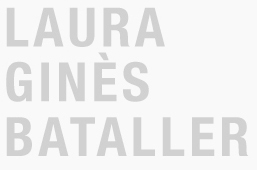Congaborealis is an online platform from San Francisco connecting art from the north and the south and they enjoy showcasing the art of mid-career and emerging artists, specifically in the field of print and experimental film. Last week at Congaborealis Carousel Interview Series and as Animation Quartet (Rafa Castañer, Laura Ginès, Pepon Meneses & Victor Sastre), we answered some questions about our first film’s process. Curated by Karen Murillo.
… Animation Quartet is an art group from Barcelona making “sounds that draw” and “drawings that sound”…
C/B: This first question is related to collaboration, as it is becoming more common to view artists as individual entities and more rare to exalt the collaborative nature of art. Hence, I was wondering, what are the biggest rewards and the biggest challenges in collaborative work?
Quartet/Laura Ginès: Creative people in disciplines as ours (as in animation) are used to working with a team. What it is not so usual is to share authorship without roles or hierarchy. Co-creation interest us as a creative tool that helps one to arrive where you couldn’t arrive alone, and the idea of Animation Quartet emerges from wanting to emulate a musical group. Initially, we wanted to start a rock band…
C/B: How do you collaborate in an art project and synthesize all the pieces together when every person has their own visual language? How do you reach a certain vision or idea and create a cohesive final piece as in Animation Quartet #1 ?
Quartet/Laura Ginès: Every color symbolize each one of us, that must choose an instrument or drawing tool and to maintain it throughout the piece; and the distinct animated part, that each one of us would work separately, would come together in a more decisive way as the film developed. Only the last sequence of the film was constructed physically, and that same day we captured the images. The process was based in believing in experimenting, we knew that limiting ourselves to a plan would take us somewhere.
C/B: When working with abstract visuals and abstract sounds do you work within unconventional narratives related to more abstract subjects such as feelings, emotions and even poetry?
Quartet/Laura Ginès: I believe that our interest from a visual abstract language is relatively new. In my case, certainly, not so much of Rafa who has always been interested in terrain vague, in that the figuration can be redrawn without loosing the general picture out of sight. I believe that what connects the four of us to this language is music. A few years ago we started to work, also as part of our job as teachers and artistic process, with “sounds that draw” and “drawings that sound”.
C/B: For someone that is not familiar with animation, can you explain the techniques that were used to create this piece? What are the processes you employed to create this artwork?
Quartet/Laura Ginès: All and each one of the frames of the art piece are originals and made over paper. Rafa worked with ink and brush, Victor with rubber stamps, Pepon with colored adhesive ribbons and me (Laura) with a nib with five tips. The superposition of different interventions is not postproduction, but it is in the original piece. The frames were captured with a photographic camera and were digitally edited. The color retouching is also worked on minimally.
C/B: Do the visuals lead the music or does the music lead the visuals? What comes first in the expression of a piece and how do you knit them together?
Quartet/Laura Ginès: The sonic strategic is similar to the visual one. We did not impose the use of one single instrument and maintain it. While we resolved each drawing sequence, we taped a short sound piece of equal duration. The superposition here was done during post-production, once the image was edited, this past was very emotive. Rafa converted a bathtub to a bell, Victor use a crystal glass to create to whistle sounds, I used the violin (Laura) and Pepon used the sound of the same adhesive tape for which he composed the same images.
C/B: How do you conclude a piece and is it necessary to do so?
Quartet/Laura Ginès: To make conclusions is essential. Even giving them form in writing is useful, as we are doing here and every time that the piece has been published and exhibited. Conclusions are the full stop that allow one to take one more step forward. Animation Quartet #1 has been an enormous stimulus and the piece has been received so well that we are having talks of how the quartet can become a stable collective of animated productions of eight hands, so we can start to dedicate more times towards it. We have also made an AnimationQuartet #2 in the form of four flip books that are also abstract and that we would like to keep on developing, and our desire is that there will be many more.
